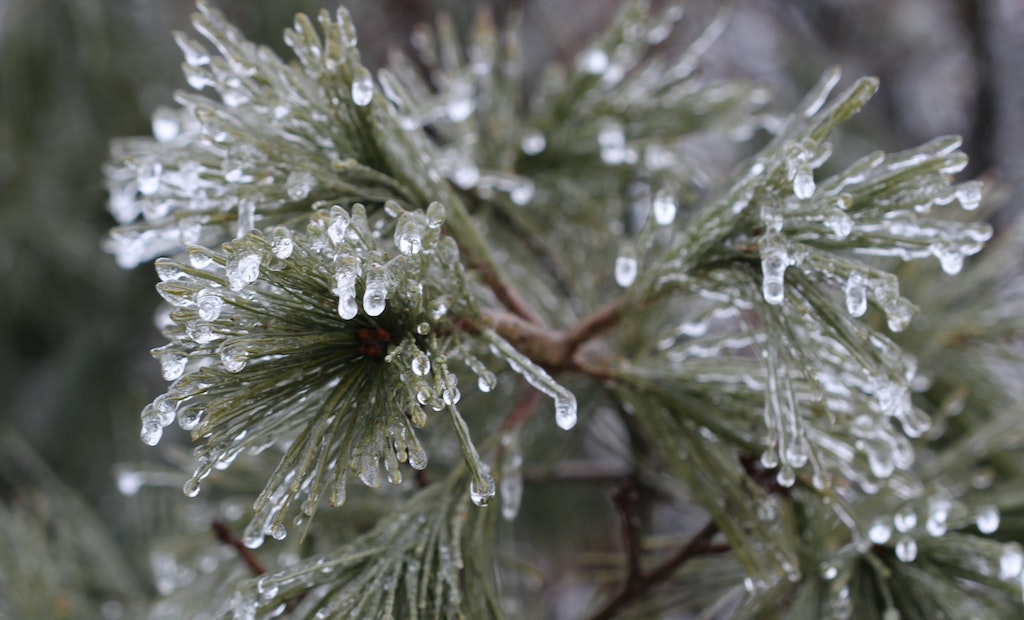Interested in Tanks?
Get Tanks articles, news and videos right in your inbox! Sign up now.
Tanks + Get AlertsNo matter what you do as an operator, mother nature has a way of disregarding best-laid plans.
In the closing days of January, a historic cold front swept through the Midwest, causing problems for water and wastewater systems alike.
Take for example the case of an SBR plant in Renville, Minnesota, operated by PeopleService Inc. Part of the system is an 800-pound floating mixer rated to hold another 800 pounds.
It iced up so badly during the recent cold weather event that it actually sank into the aeration basin. That means approximately a half-ton of ice built up and pushed the entire pontoon underwater, in only two days’ time.
“The cold temperatures caused every splash of water to freeze onto it,” says McGraw Nelson, a maintenance tech at the plant. “A half-ton of ice shoved the whole things underwater and ripped off one of the steel lines holding it in place.”
As of Feb. 7, there was still too much ice in the way to pull out the mixer. “It was compounded by a ladder effect of sorts,” Nelson says. “Basically, the ice began pushing it under, causing ice on the bottom to melt, but more ice to form on top, so it was gradually pushed under until none of it was visible,” McGraw says.
Inventive solutions
Any operator north of St. Louis knows that you have to prepare for cold weather, whether that’s preventive maintenance and repairs, or increased monitoring of effluent temperatures and crystallization in basins. But even with all the preparation in the world, the types of extreme cold recently brought on by what many are calling a polar vortex will cause unexpected problems.
Tim Wiesner, project manager for the Wazee Water Reclamation Facility in Black River Falls, Wisconsin, has gone to extreme lengths to keep equipment functioning this winter. “A heater in the chemical feed building wasn’t able to keep up with the extreme cold and wind, so we put two additional milk-house heaters in that building, and put heat tape on the waterline. Mist from the water coming through the influent flowmeter (a 9-inch Parshall flume with a Siemens sensor) freezes, so we have been pouring hot water over that to keep it accurate,” says Wiesner. “Ice interferes with the level reading in the aerobic digester, so I go up the ladder to view the sludge level.”
Often, it is not large equipment like a mixer, but instead the smallest bits and pieces of a plant that fail under extreme cold. Sampling lines, flowmeters and control panels are frequently unforeseen fatalities.
“We did have a few tower level and lift station control panels where the panel heater was functioning but just couldn’t keep up with the severe cold,” says Paul Christensen, a regional manager with PeopleService. “Because our guys verify monthly that our alarms are working, they were notified of the impacted controls and were able to remedy the situation before any emergency.”
Years of dealing with cold weather has taught most operators of the north tips and tricks necessary to keep their plants functional.
“We have found that adding a 60-watt incandescent light bulb inside the panel can provide enough supplemental heat to keep things operational until more moderate weather returns,” Christensen says.
At one plant staffed by PeopleService, employees built custom covers out of plywood and tarps just to block the wind. When left uncovered, clarifier basins and aeration tanks are often the first casualty of extreme cold.
A wastewater treatment plant in Yorkville, Wisconsin, experienced a freeze-up on their clarifier skimmer, despite preparation and a preventive maintenance plan going back to October. Though just a simple 20-minute fix, issues like this go to show that when temps breach minus 20, water and wastewater treatment is at the mercy of the elements, and operators just have to hang on for the ride.






